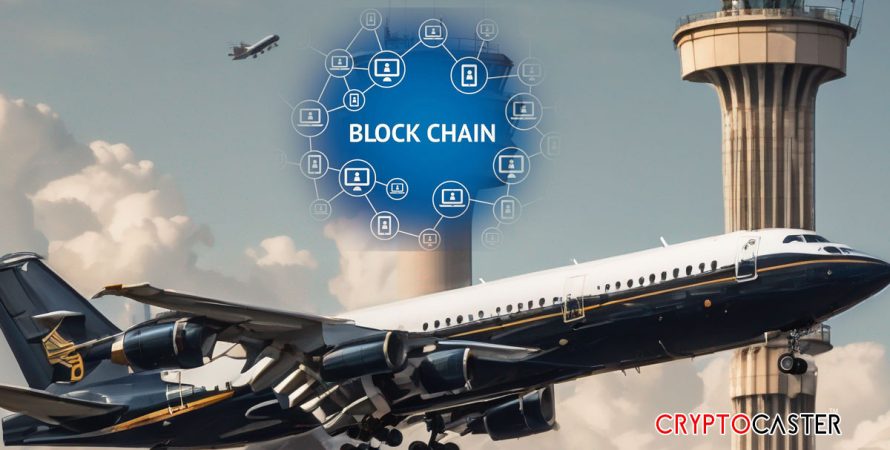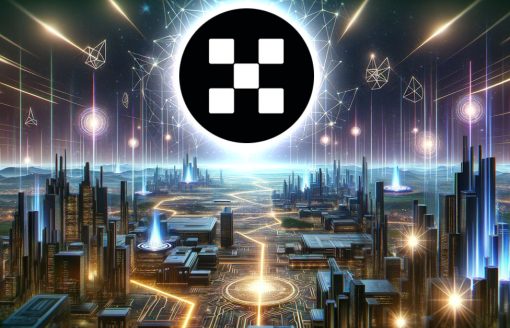The use of “centralized sequencers” by prominent rollup operators to bundle transactions and transmit them to Ethereum has drawn criticism, but the actual dangers may be found elsewhere.
As an alternative to using the frequently congested Ethereum network for transactions, cheap and quick “rollup” networks like Arbitrum, Optimism, and Coinbase’s Base are swiftly gaining popularity. These “layer 2” networks serve as the final step in the transaction process before Ethereum stores the transaction history.
However, the reliance of these layer 2 networks on a vital component of infrastructure known as the “sequencer,” which is in charge of gathering user transactions and guiding them down to Ethereum, has recently received a lot of attention.
According to Sandy Peng, co-founder of the Scroll rollup, the sequencer is comparable to “the air traffic controller for the specific L2 ecosystem that it serves,” she said this week in an interview. it who initiates a transaction first when Alice and Bob try to do it simultaneously? The sequencer makes that determination.
A sequencer is in charge of confirming, sorting, and compressing transactions made on a “layer 2” rollup network into a packet that can be sent down to the layer 1 chain, such as Ethereum. The sequencer receives a small fraction of the user fees as compensation for its work.
Today’s rollup sequencers are frequently managed by “centralized” organizations, which raises concerns about the arrangement because they can be single points of failure, potential targets for transaction censorship, or even a choke point should the government ever decide to shut it all down. According to projections by the analytical company FundStrat, Coinbase, for instance, manages the sequencer for its brand-new Base blockchain, a function that may generate $30 million in net revenue yearly.
Stay in the know on crypto by frequently visiting Crypto News Today
It goes beyond Base. The majority of today’s top rollups rely on “centralized” sequencers, which means that sequencing is handled only by one party, typically the company that created the rollup. Although there are options for “decentralizing” this system, Ethereum’s largest layer 2s have not yet adopted them, or they haven’t had the time.
People frequently object to the idea of a single corporation owning a crucial aspect of how a chain functions in the realm of blockchains, where trust is meant to be limited.
However, speaking with experts gives one the feeling that there are other areas where layer 2 decentralization and security are more at risk.
How do sequencers work?
Like other layer 2 rollups, the en vogue Base network from Coinbase offers consumers rapid and inexpensive transactions that ultimately “settle” on the main Ethereum chain.
A rollup like Base’s key selling point, aside from simplicity, is that it is designed to use the basic security infrastructure of the Ethereum network because it runs directly on top of it.
A sequencer node swoops in and compresses the transaction that the user submits to Base into a “batch” of transactions from other users. These transactions are subsequently passed on to Ethereum by the sequencer, where they are formally recorded in its ledger.
Coinbase is now the only sequencer on Base, which means the business is alone in charge of arranging and batching transactions from Base users, much like how the other major rollups operate.
The significance that this structure plays in the context of Base’s revenue model was hinted at by CEO Brian Armstrong during Coinbase’s quarterly earnings call with Wall Street analysts last month: “Base will be monetized through what are called sequencer fees,” stated Armstrong. When a transaction is completed on Base, sequencer fees can be earned. Coinbase can essentially run one of these sequencers over time, just like others.
CryptoCaster Quick Check:
There is technology that allows for decentralized L2 sequencing, which distributes the sequencer responsibility across several parties.
Other rollup sites and Coinbase also claim they will eventually use this technology. Decentralized sequencers, however, have so far proven challenging to scale up without slowing down processes or posing security problems.
The lucrative income generated by operating the sequencer would appear to be a deterrent to decentralization. This also holds true for the possible maximal extractable value (MEV) opportunities that centralized sequencing may bring about—added revenue that customers may obtain by carefully choosing the sequence in which their transactions are carried out.
In the meanwhile, consumers face hazards as a result of current centralized sequencer configurations.
A recent study report by Binance focused on the issues: “As the sequencer controls the ordering of transactions, it has the power to censor user transactions (although complete censorship is unlikely given that users can submit transactions directly to the L1),” the report claimed. The utmost extractable value (“MEV”), which the sequencer can also extract, may be economically detrimental to the user base. Additionally, liveness, or how affected the entire rollup is if the lone, central sequencer fails, can be a significant problem.
Since sequencer systems are anticipated to stay centralized for some time, these concerns are anticipated to endure. Sequencers, though, might be a red herring when it comes to worries about layer 2 security.
Significant exposure exist.
The main concerns of blockchain users are that their transactions are completed as planned and that their wallets are secure against unauthorized transactions of missing capital resource.
Centralized sequencers can theoretically slow things down or rearrange transactions to extract MEV if they are acting maliciously, although they typically lack the capability to completely censor, enhance, or fake new transactions.
Decentralizing sequencers “is lower down on our priority list when it comes to the things that make an L2 a good L2,” added Peng.
Notably, there are currently no fraud proofs in the well-known Optimism rollup, which Coinbase utilized as the model for developing its own Base chain. Fraud proofs are algorithms on the layer 1 chain that “prove” that layer 2 transactions have been recorded accurately.
According to Anurag Arjun, the creator of the data availability-focused Avail blockchain, “more than decentralized sequencers, the important part is to actually implement fraud proofs or validity proofs and to have an escape hatch mechanism.”
The major way rollup networks like Optimism and Base are designed to “borrow” Ethereum’s security is through fraud proofs, which enable validators on the main Ethereum chain to verify that an L2 network is functioning as promised.
The goal of rollups, according to Arjun, is to build a mechanism that eliminates the need for cryptoeconomic security to be introduced by the rollups themselves. That is the purpose of deriving from the base layer, in general.
According to Arjun, roll-up networks like Optimism, Base, and others without fraud proofs are simply asking users to trust their own security procedures rather than Ethereum’s.
Additionally, Optimism and Base lack a “escape hatch” feature that would allow users to transfer their money to Ethereum in the case that a sequencer malfunctioned.
The sequencer can fail or go offline, but if there is an escape hatch mechanism, Arjun argues, “you can actually bridge back your assets and safely exit.” Without an escape route, rollup users risk losing their money if something goes wrong.
Rollup’s stages
Vitalik Buterin, a co-founder of Ethereum, has proposed a scale of decentralization for various rollup networks that ranges from stage zero to stage two. The staging requirements are designed to acknowledge that new rollup networks sometimes use “training wheels” to test and deploy to the public safely before decentralizing in the long run.
The layer 2 watchdog L2Beat measures the performance of various platforms in accordance with Buterin’s model. According to L2Beat, every major rollup network now uses some sort of training wheels.
Optimism and Base will be regarded as “stage 0” in accordance with Buterin’s classification system until they have functional fraud proofs. Arbitrum, the most significant rival to Optimism and Base, performs better because, while having a centralized sequencer, it has fraud proofs.
Even Arbitrum has flaws that keep it from reaching “stage 2” status; as of right now, it’s still primarily regarded as a “stage 1” rollup.
The lack of fraud proofs (or validity proofs, in the case of ZK rollups) and centralized upgrade restrictions are just two examples of L2Best papers’ training wheels.
Centralized sequencers are by no means the biggest challenge L2 platforms will face in order to deliver on the promise of “borrowing” Ethereum’s security, if the L2 watchdog is any indication.![]()
We hope you appreciated this article. Before you move on, I was hoping you would consider taking the step of supporting CryptoCaster’s journalism.
From Elon Musk, Larry Fink(BlackRock) to Jamie Dimon(JP Morgan Chase) a number of billionaire owners have a powerful hold on so much of the hidden agendas’ which eludes the public concerning the paradigm shift juxtaposed by cryptocurrency and web3 emerging technologies. CryptoCaster is different. We have no billionaire owner or shareholders to consider. Our journalistic efforts are produced to serve the public interest in crypto development and institutional disruptions – not profit motives.
And we avoid the trap that befalls much U.S. and global media – the tendency, born of a desire to please all sides, to engage in false equivalence in the name of neutrality and retail consumer protection. While fairness and transparency dictates everything we do, we know there is a right and a wrong position in the fight against fiat global banking interest and monetary reconstruction precipitated by the emerging crypto ecology.
When we report on issues like the FTX, Binance and Ripple crisis, we’re not afraid to name who or what is uncovered. And as a crypto sentinel, we’re able to provide a fresh, outsider perspective on the global monetary disruption – one so often missing from the insular American and European media bubble.
Around the world, readers can access the CryptoCaster’s paywall-free journalism because of our unique reader-supported model. That’s because of people like you. Our readers keep us independent, beholden to no outside influence and accessible to everyone – whether they can afford to pay for news and information, or not.
We thankyou for the on-going support our readers have bestowed monetarily. If you have not considered supporting CryptoCaster, if you can, please consider supporting us just once from $1 or more of Bitcoin (satoshi) or Eth, and better yet, support us every month with a little more. Scroll further down this page to obtain CryptoCaster’s wallet addresses.
Thank you.
Kristin Steinbeck
Editor, CryptoCaster
Please Read Essential Disclaimer Information Here.
© 2024 Crypto Caster provides information. CryptoCaster.world does not provide investment advice. Do your research before taking a market position on the purchase of cryptocurrency and other asset classes. Past performance of any asset is not indicative of future results. All rights reserved.
Contribute to CryptoCaster℠ Via Metamask or favorite wallet. Send Coin/Token to Addresses Provided Below.
Thank you!
BTC – bc1qgdnd752esyl4jv6nhz3ypuzwa6wav9wuzaeg9g
ETH – 0x7D8D76E60bFF59c5295Aa1b39D651f6735D6413D
MATIC – 0x7D8D76E60bFF59c5295Aa1b39D651f6735D6413D
LITECOIN – ltc1qxsgp5fykl0007hnwgl93zr9vngwd2jxwlddvqt
CRYPTOCASTER HEATMAP





